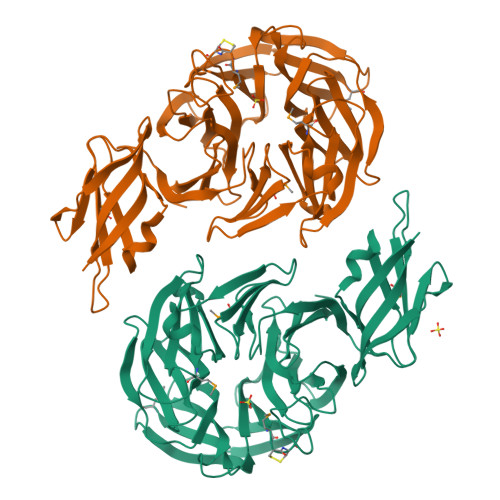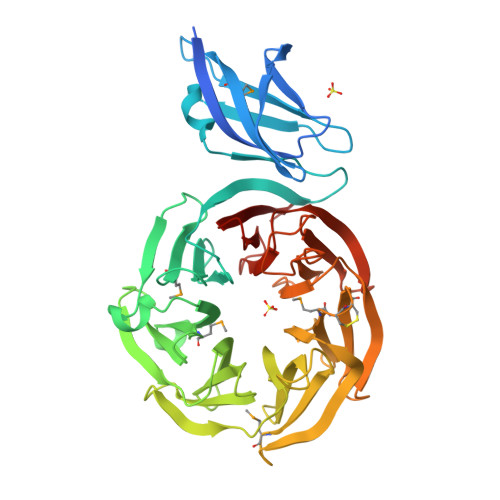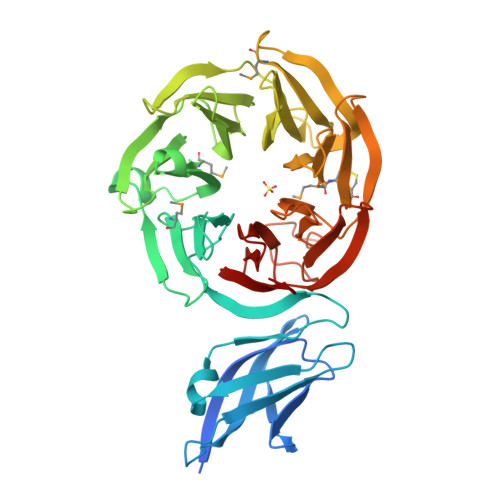The leptospiral antigen Lp49 is a two-domain protein with putative protein binding function
Giuseppe, P.O., Neves, F.O., Nascimento, A.L.T.O., Guimaraes, B.G.(2008) J Struct Biol 163: 53-60
- PubMed: 18508281
- DOI: https://doi.org/10.1016/j.jsb.2008.04.003
- Primary Citation of Related Structures:
3BWS - PubMed Abstract:
Pathogenic Leptospira is the etiological agent of leptospirosis, a life-threatening disease that affects populations worldwide. Currently available vaccines have limited effectiveness and therapeutic interventions are complicated by the difficulty in making an early diagnosis of leptospirosis. The genome of Leptospira interrogans was recently sequenced and comparative genomic analysis contributed to the identification of surface antigens, potential candidates for development of new vaccines and serodiagnosis. Lp49 is a membrane-associated protein recognized by antibodies present in sera from early and convalescent phases of leptospirosis patients. Its crystal structure was determined by single-wavelength anomalous diffraction using selenomethionine-labelled crystals and refined at 2.0 A resolution. Lp49 is composed of two domains and belongs to the all-beta-proteins class. The N-terminal domain folds in an immunoglobulin-like beta-sandwich structure, whereas the C-terminal domain presents a seven-bladed beta-propeller fold. Structural analysis of Lp49 indicates putative protein-protein binding sites, suggesting a role in Leptospira-host interaction. This is the first crystal structure of a leptospiral antigen described to date.
Organizational Affiliation:
Centro de Biologia Molecular Estrutural, Laboratório Nacional de Luz Síncrotron, Rua Giuseppe Máximo Scolfaro 10000, PO Box 6192, Campinas 13083-970, SP, Brazil.






















